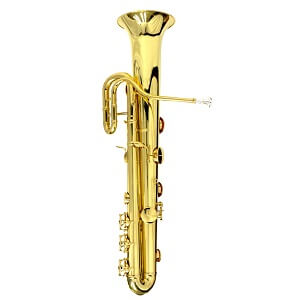Ophicleide
 The ophicleide is a keyed brass instrument invented by the Frenchman Jean Hilaire Asté in 1817. Its deep voice was a welcome addition to the brass section, and it quickly entered the romantic era orchestra.
The ophicleide is a keyed brass instrument invented by the Frenchman Jean Hilaire Asté in 1817. Its deep voice was a welcome addition to the brass section, and it quickly entered the romantic era orchestra.
The ophiclieide replaced the serpert, an instrument that had been in wide use since the Renaissance. The serpent had the mouthpiece of a brass instrument and sideholes like a woodwind. Its curved wooden body resembled a snake, hence its name. The instrument was difficult to play, with sometimes unexpected results. By the turn of the 19th century – a time of many advances in instrument technology – there was a desire to find something that could replace the serpent. Asté’s invention filled the need.
The name “ophicleide” comes from the Greek words meaning “serpent with keys,” which essentially describes the instrument. Mendelssohn was an early admirer who included it in many compositions. Berlioz, Verdi, and Wagner were among later composers who wrote for it.